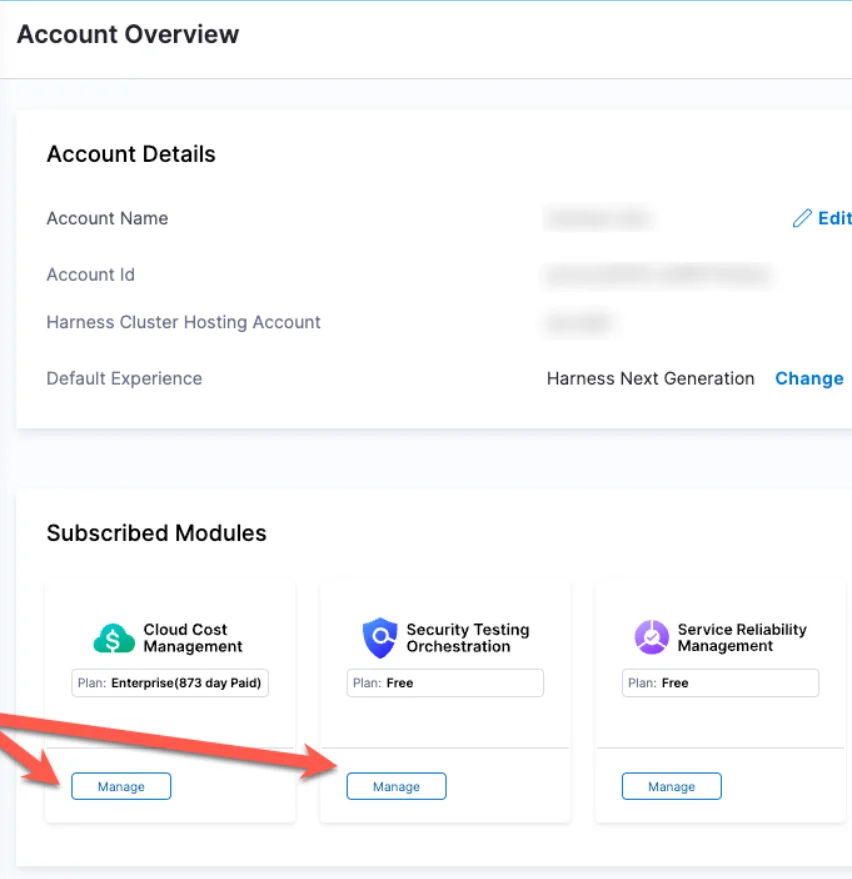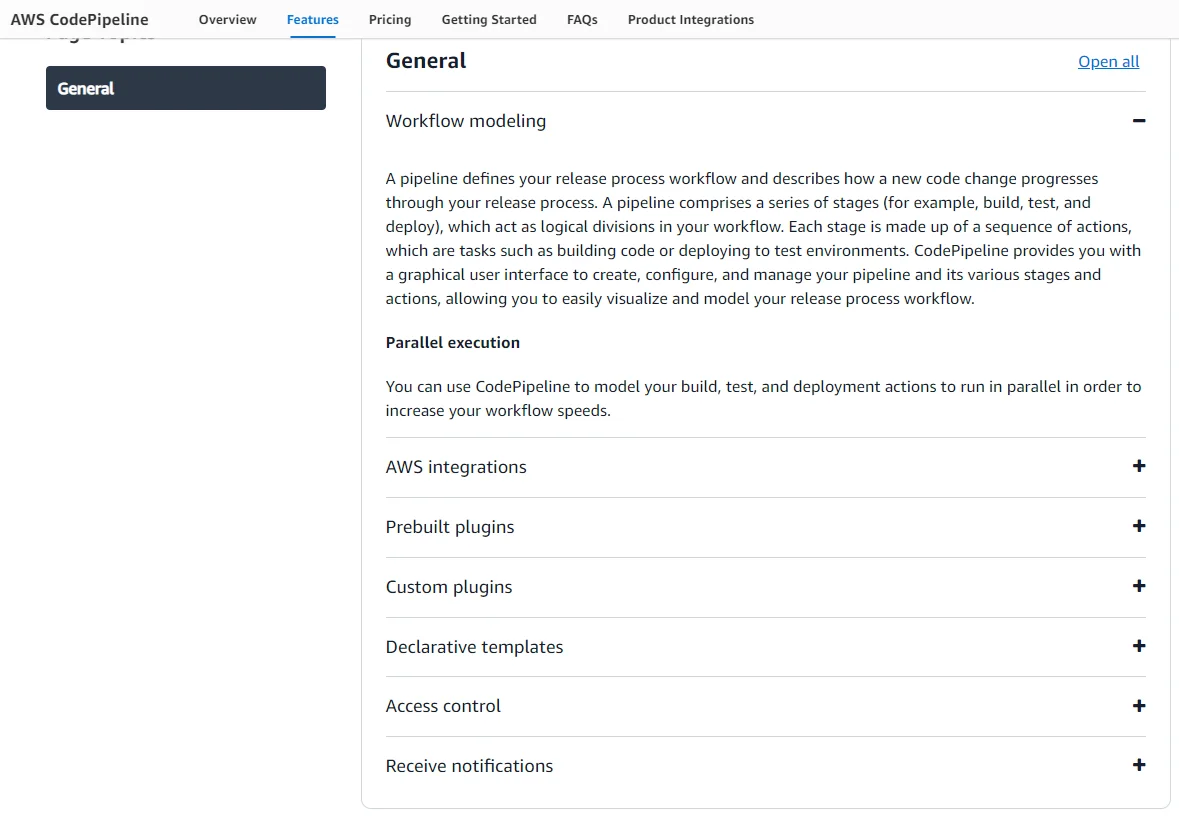Harness.io wants to be your one-stop shop for all things cloud management. To do so, the platform offers tools for automating complex processes, ensuring compliance and security, and improving cloud visibility.
This holistic approach can accelerate software delivery and optimize operational costs in multi-cloud environments. But at what cost?
You’ve probably heard that the Harness.io pricing model is confusing and opaque. And now Harness has restructured its pricing. So, let’s break down what the platform does and what you’re paying for.
Harness Features: What Does Harness Do?

Harness.io features
Harness.io is an advanced software delivery (CI/CD) and cloud management platform. It provides a suite of tools tailored for DevOps, FinOps, and DevSecOps teams – all in one place. It also includes support for multi-cloud deployments (AWS, GCP, Azure) and over 100 integrations with various DevOps tools.
Other notable features covered in the Harness pricing model include:
Continuous Integration and Delivery (CI/CD
This can help your DevOps teams automate and streamline processes such as code testing, canary and blue/green releases, automated health checks, and rollbacks with minimal manual intervention.
Feature flag management
Harness supports Smart Feature Flags for controlled feature rollouts. This helps your team reduce risk, ensuring your code, features, and applications are stable, which in turn can improve customer satisfaction.
Security and compliance
The platform integrates security testing into pipelines, providing vulnerability detection and compliance management tools, such as audit trails and policy enforcement through the Open Policy Agent (OPA).
Cloud cost management
It provides tools for monitoring and optimizing cloud spend across multiple platforms (AWS, Azure, GCP). Notable capabilities include spot management, Reservations/Savings Plans management, and automated compliance optimization.
Infrastructure-as-Code (IaC)
Expect automated drift detection, cost estimation, and state management capabilities. This ensures your infrastructure aligns with defined configurations, compliance, and security policies across diverse cloud resources while minimizing manual oversight and overspending.
AI-powered insights
Tools like Harness AI use machine learning algorithms to forecast spending and detect anomalies in your cloud environments. The platform’s AI can also code, manage pipeline issues, and generate tests.
Automated resource management
Features such as Cloud Autostopping and Commitment Orchestrator automatically shut down idle resources and manage long-term commitments. Suitable for optimizing commitment discounts.
Chaos engineering
Your team can simulate controlled system failures to detect weaknesses for improvement. Harness includes full SDLC coverage, policy-driven governance, and out-of-the-box integrations to promote continuous resilience.
Ultimately, Harness seeks to be your engineering teams’ all-in-one platform, from CI/CD to chaos engineering. But perhaps you are stuck on pricing like these engineers on Reddit:

Harness pricing complaints
Or, like many others, you may have seen this past pricing structure but couldn’t quite get it:

Harness cloud cost management pricing on AWS
So, how much does it cost to use these Harness features?
How Much Does Harness Really Cost?
Harness.io pricing is primarily based on the specific modules you choose and the number of developers you add. This means you can buy exactly what you need right now and flexibly add more modules to your subscription as the need arises.
They call this approach the Developer 360 experience. It covers all modules except Cloud Cost Management, which is on its Cloud Spend Model (a percentage of your cloud spend).
Note that:
- Anyone who works on your software development, deployment, operations, optimization, and more counts as a developer.
- Harness.io modules consist of the following:
- Code repository
- Continuous integration
- Continuous Delivery and GitOps
- Feature management and Experimentation
- Infrastructure-as-Code management
- Chaos engineering
- Service reliability management
- Software engineering insights
- Internal Developer Portal
- Security Testing Orchestration
- Supply chain security
- Cloud cost management
For each module, a separate developer license is required for each user. In addition, each module has a slightly different billing method.
Yes, there’s more to Harness pricing than meets the eye. So, here’s a detailed breakdown of the pricing structure to explain what you’re getting:

Harness pricing tiers
There’s one tier missing in the image, but we’ll explain all four Harness.io pricing tiers below.
The Harness.io Open-Source Plan
This Community plan is free and provides essential features for users looking to manage their projects with basic support.
It supports Git-based source control management, pre-configured developer environments connected to your chosen IDE, artifact registries, and more. It is available for on-premises use and does not include enterprise security features.
Harness.io free plans (and free trials)
This $0 per month tier is ideal for small teams or individual developers. It also includes 2,000 Cloud Credits per month. In addition, you get some level of functionality across these six Harness.io modules:
- Code Repository
- Continuous Integration (CI)
- Continuous Delivery (CD) and GitOps
- Cloud Cost Management (CCM)
- Feature Flags Management (FF)
- Chaos Engineering
Each free plan on Harness includes AI capabilities (like AIDA, the AI Development Assistant). Each one also offers the latest developer experience (such as Git Experience and ready-to-use templates), native integrations with hundreds of third-party tools, custom dashboards to build your own analytics, and enterprise-level security and governance.
Trials run for 14 days if you’re new to a pricing tier, such as when you upgrade to a higher Harness plan.
Harness Startup Plan
This plan costs $57 per developer per month. Your company must have fewer than 500 employees, and you can only purchase up to 100 Developer Licenses to qualify for Startup pricing. Or, you must spend less than $5M on cloud cost management to be eligible.
If you do, you are free to pick one, more, or all of the following modules to include in this plan:
- Code Repository
- Continuous Integration (CI)
- Continuous Delivery (CD) & GitOps
- Cloud Cost Management (CCM)Infrastructure as Code Management
- Feature Flags Management (FF)
- Internal Developer Portal (IDP)
Harness Enterprise Plan
This plan uses custom pricing, so you need to talk to sales first. It is tailored for larger organizations that need unlimited developer access and advanced features like enterprise security, policy-based governance, and custom dashboards.
Accordingly, Enterprise pricing varies significantly based on the modules you choose, the types of services you manage with Harness, and the number of developers you add.
What are the other cost considerations on Harness?
- Headcount-based pricing: The overall cost increases with your organization’s size.
- Selection of features: Harness pricing also varies based on the features you include as part of your subscription. You can also negotiate prices depending on your specific needs and the contract duration.
- Add-on entitlements: You can purchase additional consumption entitlements for modules like Continuous Delivery and Feature Flags. This can help your team scale its usage without committing to a higher base plan upfront.
What billing options does Harness.io offer?
Harness provides monthly and annual billing options. This provides flexibility. However, monthly billing is only available in-app. It is also limited to certain modules like Continuous Integration and Feature Flags.
Changing your Harness.io subscription, including the module and entitlements, is self-service. No need to call sales each time.
First, check your module subscriptions and then edit them under Account Settings>>Subscribed Modules>>Overview page>>Manage>>Subscriptions. Picture this:

Harness module subscription settings
Is Harness Pricing Worth It?
Overall, the platform wants to ensure your company only pays for what it needs while allowing room for growth as your software delivery requirements evolve.
What Are Some Alternatives To Harness?
Harness.io has robust alternatives if pricing is still too complicated, you’d rather use another cloud management platform, or you need a dedicated solution to handle a specific cloud management function.
Here are five for each of the core Harness features.
1. GitLab

GitLab provides a complete suite for the entire software development lifecycle, including version control, CI/CD, issue tracking, and monitoring. Meanwhile, Harness.io specializes in continuous delivery and deployment, focusing on automating release processes, improving software update efficiency, and cost management.
2. CodePipeline

AWS CodePipeline is a fully managed CI/CD service that automates software releases. It enables you to define workflows for building, testing, and deploying applications using various AWS services and third-party tools. CodePipeline excels in AWS integrations and is cost-effective for AWS-centric environments, but Harness provides multi-cloud support.
3. CloudHealth

Harness competitor (and VMware’s) CloudHealth is a multi-cloud management platform that optimizes cloud costs, governance, and security across various IT environments. It offers a broader range of capabilities across multi-cloud infrastructures for enterprise-level financial oversight.
4. Gremlin

Gremlin excels in chaos engineering with its wide range of attack types and robust security tools. This makes it suitable for complex infrastructures. Also, Gremlin offers substantial community support, a user-friendly UI, and API access to create manual integrations.
5. CloudZero

This is the first platform that accurately maps your cloud costs to the people, products, and processes that generate them.
With CloudZero, you get:
- Precise cost allocation. With unit cost insights such as cost per customer, feature, product, and more, you can find out who, what, and why your costs are changing.
- Multi-cloud cost optimization. Get one view of all your AWS, Azure, GCP, Kubernetes, Snowflake, New Relic, Databricks, MongoDB, and Datadog costs (and more). After that, zoom in and out as needed to grasp the costs of each platform.
- Engineering-Led Optimization (ELO). Empower engineers with cost insights in their language, such as cost per deployment, project, and feature, to help them build cost-efficient solutions.
- Real-time analytics. Allocate 100% of your cloud costs in minutes to hours, no matter how complex your environment is.
- Timely, noise-free, and contextual cost anomaly alerts. Find the root cause of a cost spike and prevent surprises.
- Hassle-free pricing. CloudZero uses a steady and predictable pricing model. You know exactly what you’ll pay every month, have access to unlimited users, build custom dashboards and reports, and get monthly check-ins with your very own FinOps Account Manager.
We hear from customers like Drift, MalwareBytes, and Shutterstock that CloudZero pays for itself within three months. Upstart recently saved $20 million with CloudZero. Yet, nothing beats experiencing CloudZero for yourself. Risk-free, of course.  to experience CloudZero firsthand.
to experience CloudZero firsthand.
FAQs
Who is Harness best for?
Harness is ideal for enterprises aiming to improve their software delivery processes through modern practices such as Continuous Delivery-as-a-Service (CDaaS). Its clientele spans multiple industries, including finance, healthcare, retail, and technology.
What cloud providers does Harness support?
Harness supports major cloud providers such as AWS, Azure, and Google Cloud Platform (GCP). Users can choose to manage their own compute infrastructure or use the Harness Cloud, which manages the compute resources.
What pricing tiers does Harness offer?
Harness offers a free plan with 2,000 monthly cloud credits, ideal for new users. There are team and enterprise plans for more advanced needs, each with distinct features and support levels. A premier support package is also available for 20% of the subscription cost.
How can I negotiate better pricing with Harness?
To explore customized pricing options with Harness, it’s advisable to contact their sales team directly.








